The #1 Habit to Lower Blood Sugar: A Registered Dietitian’s Guide
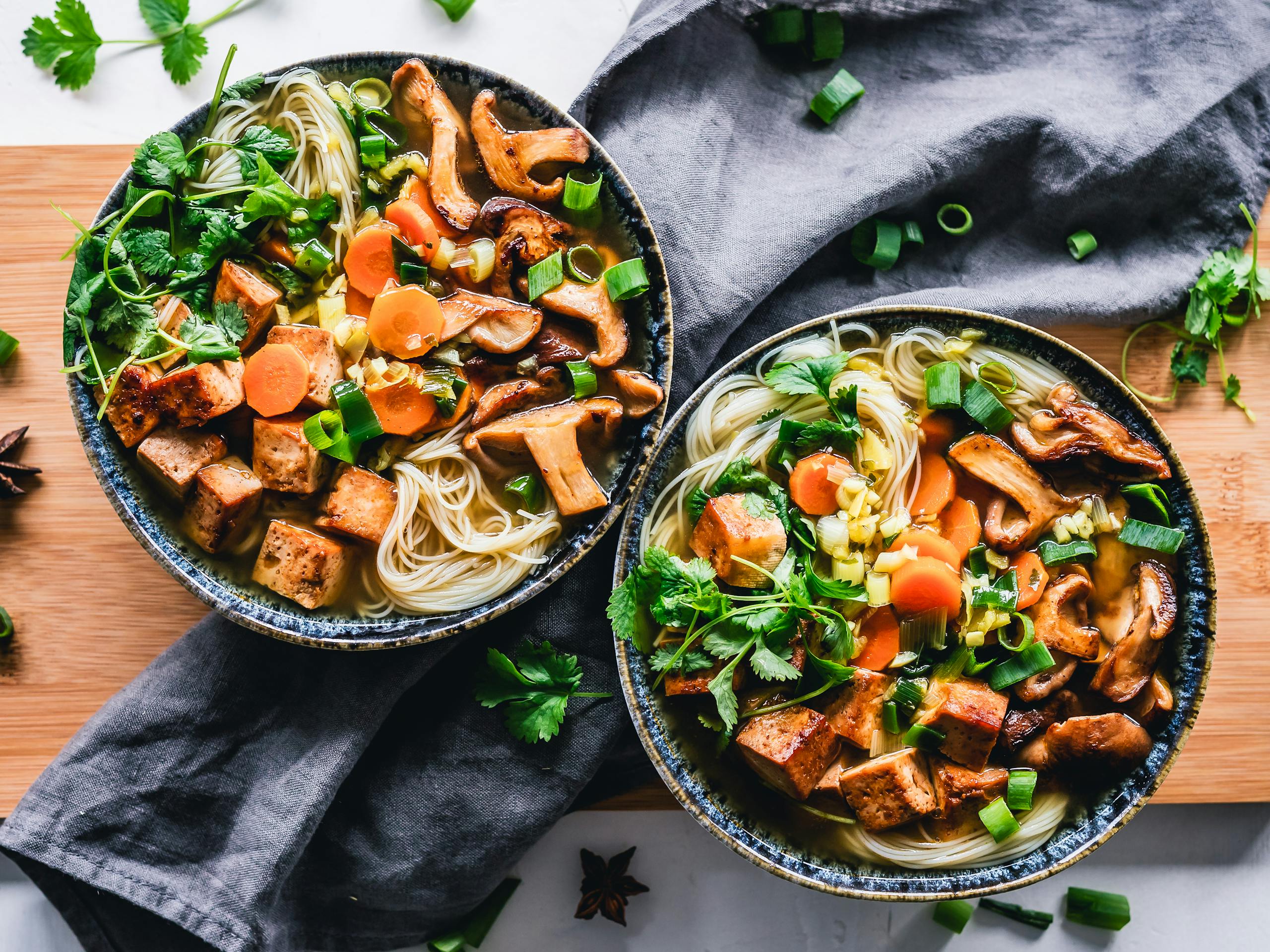
Hearing that your blood glucose or blood sugar levels are too high can feel overwhelming. You might wonder what to eat and how to manage your health. With so much conflicting advice out there, it’s easy to feel confused. If you have insulin resistance, prediabetes or diabetes, it is important to learn what foods can lower your blood sugar levels.
As a registered dietitian, I’m here to help you manage your blood sugar while still enjoying the foods you love. In this post, I’ll explain how different foods affect your blood sugar and share meal and snack ideas to help you feel your best. The goal is to eat in a way that lowers your blood sugar, supports your energy levels and is enjoyable!
Pairing Foods to Lower Blood Sugar Levels
Avoiding carbohydrates (or carbs) is a common misconception when it comes to managing your blood sugar. Instead of cutting out carbs, let’s learn how eating carbs affects your blood sugar. The key to managing your blood sugar is learning how to effectively pair your carbs with other foods.
When you eat carbs on their own (like plain rice, pasta, or toast), they digest quickly. As they break down, they turn into glucose, which enters your bloodstream. This causes a spike in your blood glucose or blood sugar levels. The faster carbs digest, the faster and higher the spike in blood sugar.
When you pair the same carbs with protein, fiber or fats, they digest slower. This means glucose will enter into your bloodstream slower. Slower digestion leads to a smaller and slower spike in blood sugar.
Instead of avoiding carbs, focus on pairing them with protein and fiber.
Foods That Help Lower Your Blood Sugar: Add instead of Avoid
What’s the best long-term diet with minimal stress? One that includes foods you enjoy! The key is adding nutrients that help your body digest carbs slower. Instead of cutting out your favorite foods, let’s focus on pairing them in ways that keep your blood sugar steady. In this section, I’ll guide you through smart food choices to help you stay satisfied and on track.
Here’s a breakdown of blood sugar-friendly foods and nutrients to include in your day.
Proteins
Protein helps stabilize blood sugar by slowing down carb digestion. This can prevent blood sugar spikes and crashes. It also keeps you feeling full and satisfied for longer. Protein is important for preserving muscle mass. Adding protein to your meals and snacks can help improve your blood sugar control.
Good sources of protein include:
- Chicken or turkey
- Lean cuts of beef and pork
- Fish (like salmon, tuna, trout)
- Tofu, tempeh, seitan
- Eggs
- Greek yogurt or cottage cheese
- Cow’s milk or soy milk
- Legumes like lentils, edamame, chickpeas, or black beans
Fats
Adding some fats to your meals can help stabilize blood sugar by slowing digestion and preventing sudden spikes in blood sugar. Fats also provide steady energy and help you feel full longer. For heart health, choose unsaturated fats, like those from olive oil, nuts, and fish like salmon. Including fats in your meals is an easy way to balance your blood sugar and keep you feeling satisfied.
Some great sources of fats include:
- Nuts and seeds (almonds, walnuts, chia seeds, flaxseeds)
- Olive oil, avocado oil
- Fatty fish like salmon, sardines, and mackerel
- Dairy (cheese, milk, yogurt, cottage cheese)
- Tahini
- Avocados
- Nut butters
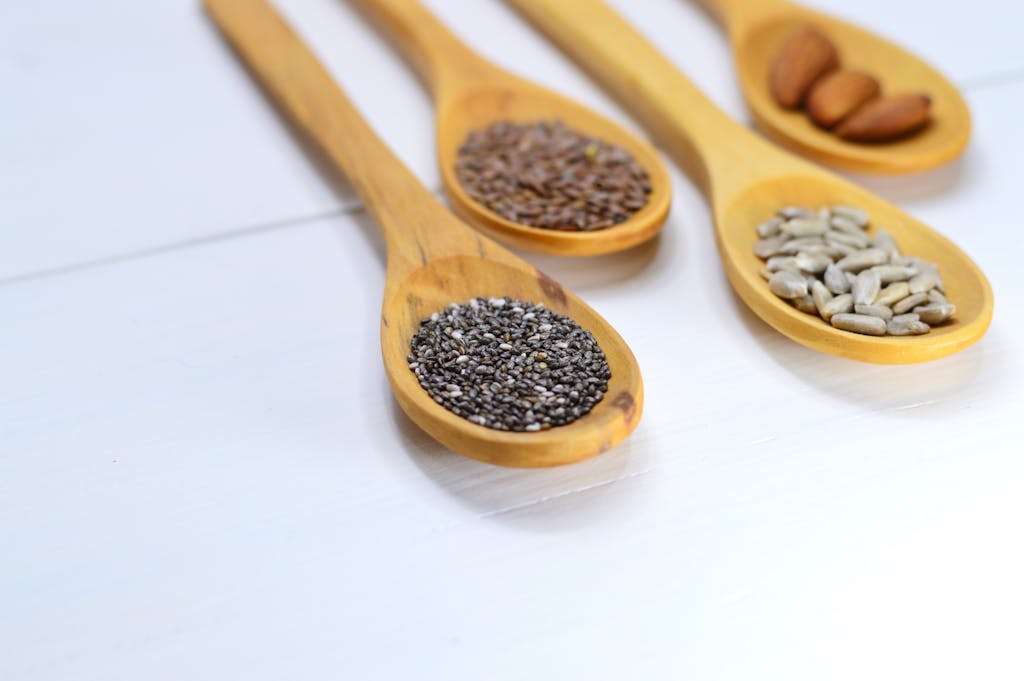
Fiber
Fiber is an important nutrient that helps keep blood sugar levels stable. Unlike other carbohydrates, fiber doesn’t get broken down into sugar, so it doesn’t cause blood sugar to rise. Soluble fiber plays a key role by slowing the absorption of glucose into the bloodstream. This helps prevent sudden spikes in blood sugar. Fiber also supports heart health by helping to lower cholesterol levels. It also aids in digestion, promotes gut health. Adding more fiber to your diet is a simple and effective way to support long-term wellness.
Including fiber-rich foods in your meals and snacks can keep blood sugar steady. Great sources of fiber include vegetables, whole grains, legumes, fruit, nuts, and seeds. Below, I’ll share simple ways to add these foods to your diet.
Non-Starchy Vegetables
Non-starchy vegetables are an essential part of a diabetes-friendly diet. These vegetables are low in carbohydrates and high in fiber. Veggies are also rich in vitamins, minerals, and antioxidants, which support your overall health.
When it comes to veggies, choose the rainbow! Each color is associated with a different family of nutrients. Some examples below:
- Leafy greens (spinach, kale, arugula, mustard greens)
- Broccoli, cauliflower, cabbage, Brussels sprouts, Bok choy
- Bell peppers, carrots, squash
- Beets
- Zucchini, cucumbers
- Onions, garlic, shallots
Whole Grains
Whole grains have more fiber, vitamins and minerals than the refined versions of the same foods. If you compare the nutrition facts labels for whole grain bread and white bread, you will notice the difference in the fiber content. Think of whole grains as foods with built-in fiber power! Choosing a whole grain option will help keep your blood sugar levels steady.
Some great choices include:
- Farro, quinoa, and barley
- Whole wheat bread and whole grain pasta
- Old fashioned rolled oats and steel-cut oats
- Sweet potatoes
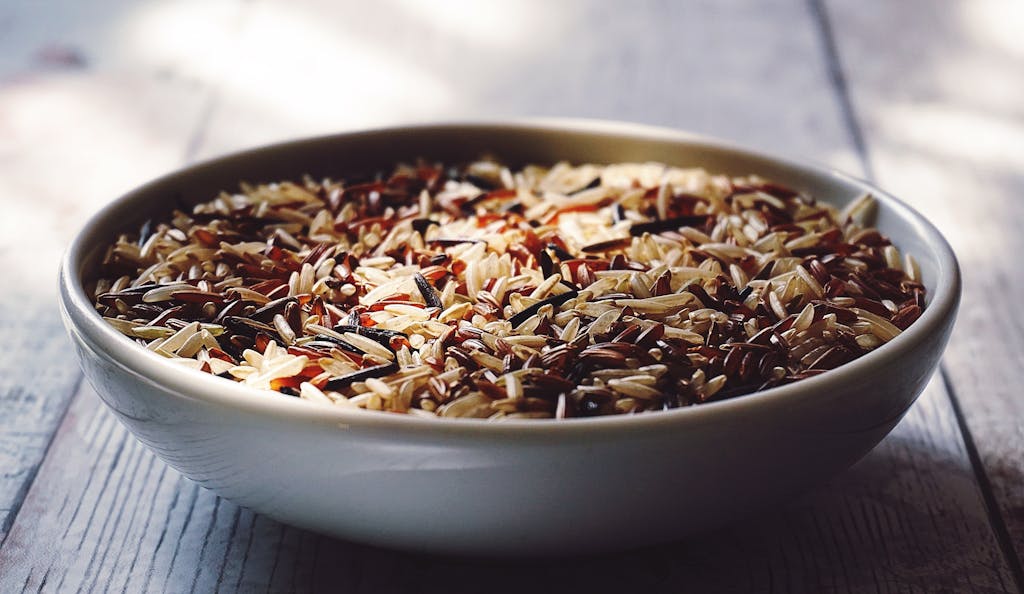
Legumes
Legumes, like beans, lentils, and chickpeas, are easy ways to add protein and fiber to your day. Plus, they’re packed with vitamins and minerals that benefit your health. Choose canned or make your own from dry and toss them into salads, add to soups, or blend into delicious spreads. Legumes are nutrient-dense foods that will keep you full and your blood sugar steady.
Choose from the following:
- Edamame (eat it as an appetizer or try dry roasted edamame as a crunchy snack)
- Chickpeas (make into hummus or add to tuna salad)
- Black beans (add to tacos and soups)
- Green or brown lentils (buy pre-cooked at add to any salad or grain bowl)
Fruits
You may have heard that fruit is too high in sugar and to avoid it. While it’s true that fruit has sugar, it is not the same as added sugars or sweeteners added to other foods. Because fruit contains fiber, carbohydrates digest slower which can prevent blood sugar spikes. They are also rich in vitamins, minerals, and antioxidants that boost our health. Fresh or frozen fruit both offer these health benefits, so enjoy them without worry. Pair fruits with protein to keep blood sugar steady.
Some ideas for tasty pairings:
- Grapes and cheese cubes or string cheese
- Apple slices and almond butter
- Melon and prosciutto
- Pineapple and cottage cheese
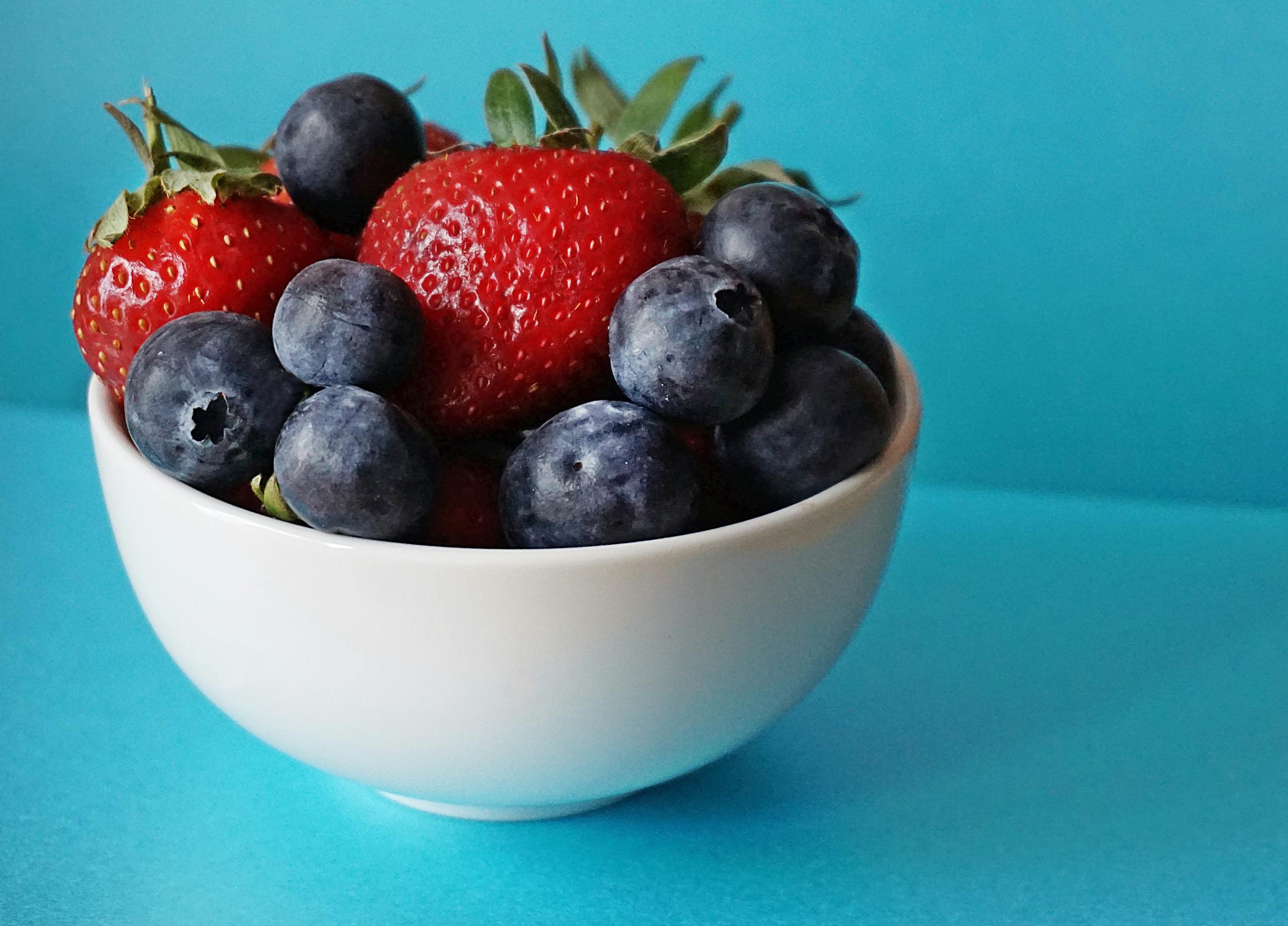
Spice It Up: Cinnamon, Turmeric, and Ginger
Certain spices, like cinnamon, ginger, and turmeric, can support healthy blood sugar levels. These spices are not only flavorful but also offer powerful health benefits. Cinnamon helps regulate blood sugar by improving insulin sensitivity. Ginger can support digestion and reduce inflammation. Turmeric has strong anti-inflammatory properties that may also help manage blood sugar levels. For tasty dishes and better blood sugar control, add these spices to your meals and snacks.
- Cinnamon: Add a dash to your coffee, oatmeal, smoothies, apple slices or peanut butter toast.
- Turmeric: Add powerful antioxidants to curries, soups, and smoothies with this tasty spice. Enhance absorption of its active ingredient curcumin with a pinch of black pepper.
- Ginger: Add fresh or dry ginger to stir-fries, soups and marinades. Try ginger tea if you are struggling with digestive issues. You can store fresh ginger in the freezer to extend its freshness.
Meal Ideas: Diabetes-Friendly Options for Every Meal
Creating diabetes-friendly meals doesn’t have to be complicated. Check your plate to make sure it includes four key components: carbs, protein, fats, and fiber. Aim for balance in most meals to support your blood sugar. If focusing on all four feels too overwhelming, start by adding protein or fiber to each meal.
Here are some simple ideas for adding protein, fiber, or fats to your favorite meals:
- Oatmeal: make it with a protein rich milk (like cow’s milk or soy milk) and add chia seeds, ground flax seeds and fresh or frozen berries
- Pancakes: serve with a side of scrambled eggs and fruit. Can choose a whole grain pancake mix for extra fiber.
- Rice: serve with stir-fried veggies and chicken or tofu. Can opt in for brown rice or swap for quinoa if you’d like a whole grain option.
- Tacos: add beans, meat or tofu crumbles, top with pico de gallo and avocado.
- Sandwich: choose a protein rich sandwich like turkey and cheese and serve with a side of carrot sticks and hummus. Choose a bread that has at least 3g of fiber per slice.
- Spaghetti: pair with meatballs (or a meat-less version), add extra veggies to the sauce (like spinach, zucchini). Can opt for a whole grain pasta for an extra boost of fiber.
- Chili: add canned chickpeas, black or pinto beans and onions, carrots, bell peppers and tomatoes. Top with avocado and shredded cheese if desired.
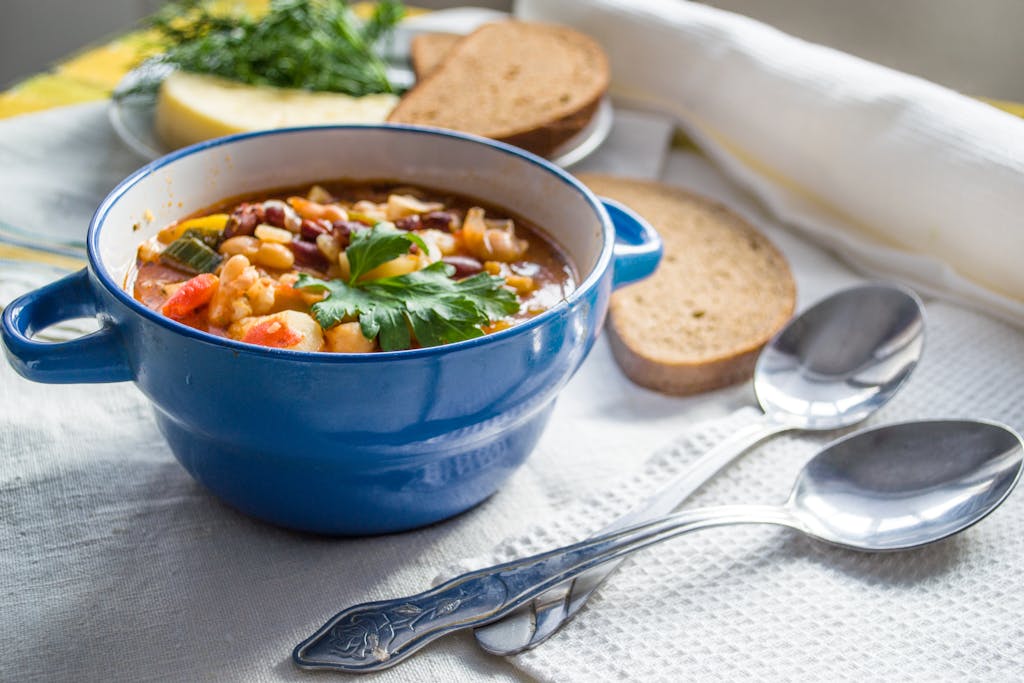
For a full day of meals, check out these nutrient-packed meal ideas, designed to keep you feeling satisfied and your blood sugar levels in range:
Breakfast
- Overnight oats made with rolled oats, chia seeds, ground flax seeds, soy milk, greek yogurt, and topped with fresh or frozen berries.
- Scrambled eggs with spinach, bell peppers, and a slice of whole grain toast.
- Greek yogurt parfait with nuts, seeds, berries, and a drizzle of honey.
Lunch
- Grilled chicken salad with leafy greens, avocado, cherry tomatoes, cucumber, canned chickpeas or lentils and olive oil dressing.
- Mediterranean bowl with quinoa, chickpeas, roasted vegetables and tahini dressing.
- Turkey and avocado wrap on a whole-grain tortilla, served with a side of carrot sticks.
Dinner
- Baked salmon with roasted Brussels sprouts and quinoa.
- Stir-fry with tofu, broccoli, bell peppers, and brown rice.
- Grilled chicken breast with a side of roasted sweet potatoes and roasted asparagus.
High Protein Snacks to Lower Blood Sugar Levels
Eating snacks can help prevent your blood sugar from dropping too low between meals. Choosing high-protein snacks keeps you energized and helps maintain steady blood sugar levels. Adding fiber-rich foods provides an extra nutritional boost and supports healthy digestion. Pairing protein with fiber keeps you satisfied and focused throughout the day.
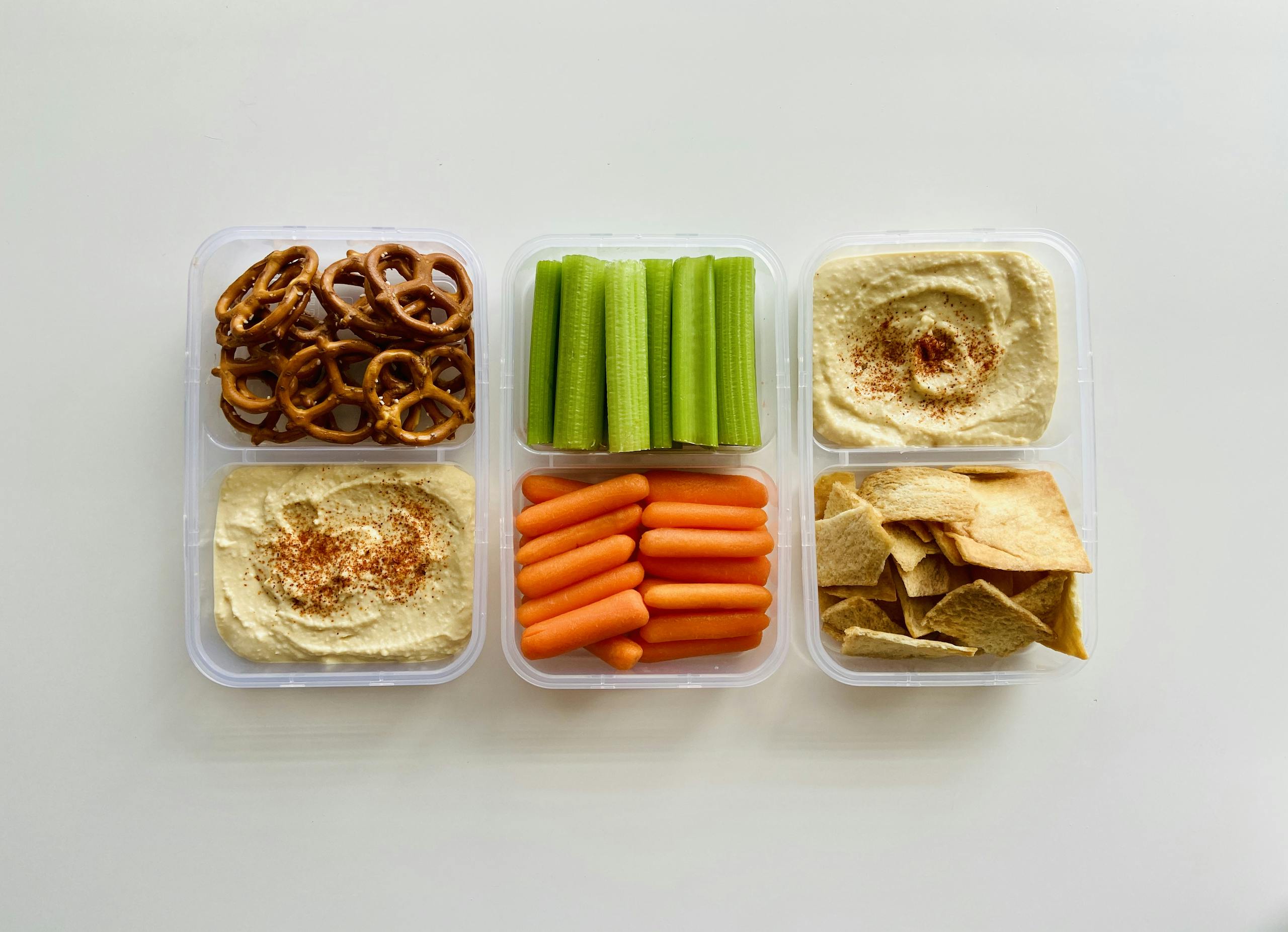
Here are some great examples of diabetes-friendly snacks:
- Greek yogurt smoothie with berries, add chia seeds for extra boost of fiber
- Cottage cheese and melon
- Whole wheat pita wedges with tzatziki sauce (made with Greek yogurt)
- Celery sticks and peanut butter
- Baby carrots and hummus
- Dry roasted edamame
- Popcorn and string cheese
- Whole grain crackers with cheese
- Hard boiled egg and bell pepper slices
- Whole grain toast with canned sardines
- Cookie and glass of milk (choose a milk with at least 8g of protein like cow’s milk, soy milk or Fairlife milk)
How a Registered Dietitian Can Help
A Registered Dietitian is an essential partner in managing your blood sugar levels. They take the time to understand your unique health needs and provide personalized advice. You will leave your nutrition appointment feeling empowered and confident in your food choices.
Here are a few ways a dietitian can help:
- Help you understand how different foods impact your blood sugar and health.
- Simplify nutrition science and give you practical ideas to improve your diet.
- Create a flexible, enjoyable meal plan tailored to your preferences and lifestyle.
- Teach you how to balance carbohydrates, proteins, and fats to keep your blood sugar steady.
- Provide practical strategies for dining out, grocery shopping, and meal prepping.
- Share delicious, diabetes-friendly recipes to inspire your meals.
If you’re ready for personalized guidance on blood sugar-friendly meal planning, I’m here to help! Book a virtual nutrition consultation today (insurance accepted) and together, we’ll create a balanced, sustainable approach to managing your diabetes. Let’s take the next step toward feeling your best!

This is such a helpful post! Love the snack ideas. I will be sharing with my patients
Thank you, Kate! Hope your patients find it helpful!
Excellent information. Pasta with a side of salad.
Apple with almond butter or cheese. Love it.
Thanks Ana!
Thank you for your kind words, Dora!